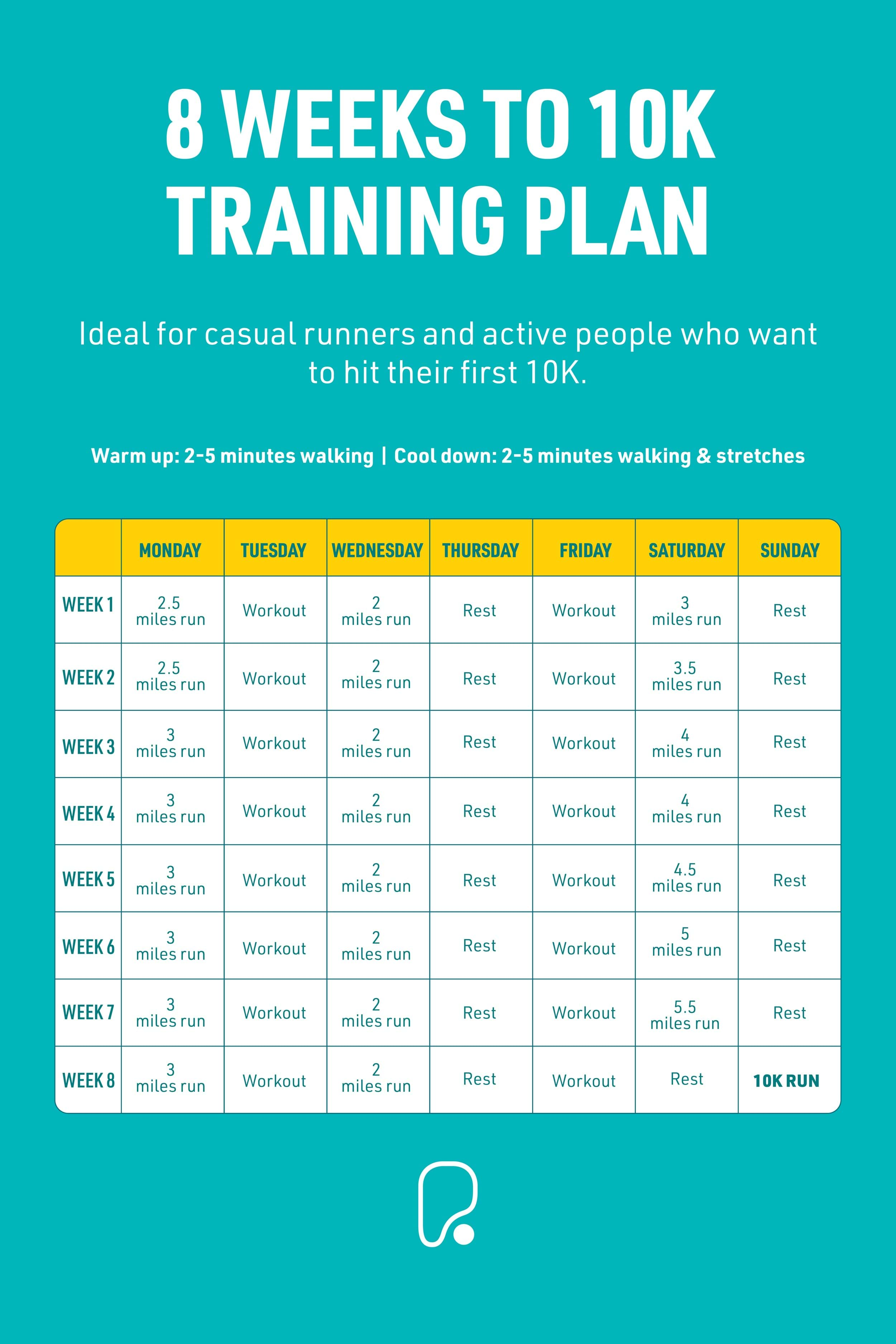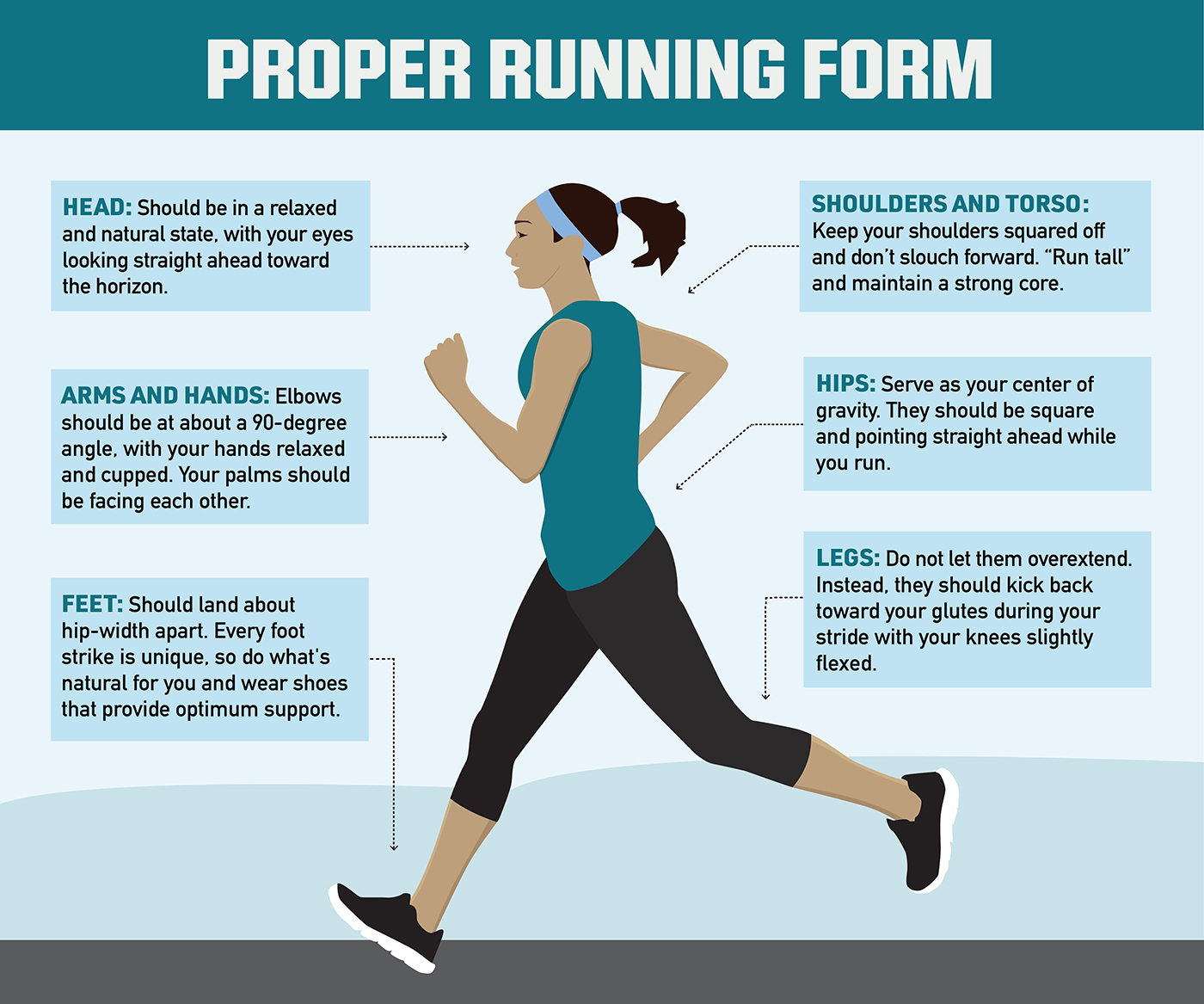Understanding the Basics: What is a 10K Running Pace?
A 10K running pace is a crucial metric for runners, representing the average speed at which an individual completes a 10-kilometer race. Monitoring one’s pace is essential for both training and racing purposes, as it helps runners gauge their progress, maintain a consistent effort, and tailor their workouts to specific goals.
Improving your 10K running pace can lead to faster race times and increased overall running efficiency. However, achieving this goal requires a comprehensive understanding of the factors that influence your pace and a well-structured plan to address them.
In this article, we will explore the fundamentals of a 10K running pace and provide valuable insights on how to improve it, from assessing your current pace to designing an effective training plan and incorporating speed work.
Assessing Your Current 10K Running Pace
Assessing your current 10K running pace is a vital first step in your journey towards improvement. By understanding your current performance, you can establish a baseline for tracking progress, identify areas for improvement, and set realistic goals.
To measure your 10K running pace, consider the following methods:
Time Trials: Organize a dedicated 10K run, either on a track, trail, or treadmill, and time yourself. Use a GPS watch or a smartphone app to ensure accuracy. Your average pace per kilometer during this run will be your current 10K running pace.
Race Performances: If you have recently participated in a 10K race, use your official race time to calculate your pace. Most race results include average pace information, but if not, you can easily calculate it using an online pace calculator or running app.
Running Apps: Numerous running apps, such as Strava, Runkeeper, or Nike Run Club, can track your runs and calculate your average pace for various distances, including 10K. These apps also offer features for monitoring progress and setting goals.
When evaluating your current 10K running pace, consider several factors that can influence it, such as fitness level, running economy, and mental strength. Fitness level refers to your overall physical condition, including cardiovascular health, muscular endurance, and flexibility. Running economy, on the other hand, represents how efficiently your body utilizes energy during running. Mental strength plays a significant role in your ability to maintain a consistent pace and push through challenging moments during a race.
By understanding these factors, you can create a more targeted and effective training plan to improve your 10K running pace. In the following sections, we will discuss setting realistic goals, designing a well-structured training plan, and incorporating speed work and mental strength training into your routine.
Setting Realistic Goals: How to Improve Your 10K Running Pace
Setting realistic and achievable goals is crucial for improving your 10K running pace. By establishing a target pace based on your current fitness level, previous race results, and long-term objectives, you can create a clear path for progress and maintain motivation during training.
To set a realistic goal for your 10K running pace, follow these steps:
Evaluate Your Current Fitness Level: Use time trials, race performances, or running apps to determine your current 10K running pace. This baseline will help you establish a realistic target pace for improvement.
Analyze Previous Race Results: If you have participated in 10K races before, review your past performance data. Identify any patterns or trends in your pace, and consider how much progress you have made over time.
Establish Long-Term Objectives: Determine your ultimate running goal, whether it’s qualifying for a prestigious race, achieving a personal best time, or simply improving your overall fitness. This long-term objective will guide your training plan and help you set intermediate goals.
Set Intermediate Goals: Break down your long-term objective into smaller, more manageable goals. For example, if your ultimate goal is to run a 10K in 50 minutes, set a series of incremental pace improvements, such as shaving 30 seconds off your current pace every few weeks or months.
Be Flexible: Understand that progress may not always be linear, and be prepared to adjust your goals as needed. Factors such as illness, injury, or changes in lifestyle can impact your training, so it’s essential to remain adaptable and open to modifying your goals as circumstances evolve.
By setting realistic and achievable goals, you can create a clear roadmap for improving your 10K running pace. In the following sections, we will discuss designing an effective training plan, incorporating speed work, enhancing running economy, and boosting mental strength to help you reach your running potential.
Designing an Effective Training Plan: Building a Strong Foundation
A well-structured training plan is essential for improving your 10K running pace. By incorporating a balance of base building, speed work, tempo runs, and recovery, you can create a solid foundation for progress and minimize the risk of injury.
Base Building: Begin by establishing a strong aerobic base, which forms the foundation of your running fitness. Focus on easy, conversational-paced runs to build endurance and increase your weekly mileage gradually. Aim for 70-80% of your total weekly volume at this comfortable pace.
Speed Work: Incorporate speed work into your training plan to improve your running efficiency and power. Speed work includes interval training, hill repeats, and fartleks (short bursts of faster running interspersed with easier running). These workouts challenge your cardiovascular system, muscular strength, and running economy, leading to improvements in your 10K running pace.
Tempo Runs: Tempo runs, also known as lactate threshold runs, help improve your running pace by increasing your lactate threshold, the point at which lactic acid begins to accumulate in your bloodstream. These runs should be performed at a challenging but sustainable pace, typically around 25-30 seconds slower than your goal 10K pace. Incorporate one tempo run per week, gradually increasing the duration as your fitness improves.
Recovery: Adequate recovery is crucial for maintaining progress and preventing injury. Schedule rest days and easy runs to allow your body to recover and adapt to the demands of training. Listen to your body and adjust your training plan as needed based on how you feel.
Cross-Training: Incorporate cross-training activities, such as swimming, cycling, or strength training, to improve overall fitness and reduce the risk of injury. Cross-training can also help alleviate muscle imbalances and improve running form.
Tapering: In the weeks leading up to a race, gradually reduce your training volume to allow your body to recover and prepare for peak performance. A well-executed taper can help you feel fresh and ready to perform your best on race day.
By following a well-structured training plan that includes base building, speed work, tempo runs, and recovery, you can build a strong foundation for improving your 10K running pace. In the following sections, we will discuss specific speed workouts, techniques for enhancing running economy, and strategies for boosting mental strength to help you reach your running potential.
Incorporating Speed Work: Strategies for Faster Running
Speed work is a crucial component of any training plan aimed at improving your 10K running pace. By incorporating high-intensity workouts into your routine, you can challenge your cardiovascular system, build muscular strength, and enhance running economy. Here are some speed work strategies and workouts to consider:
Interval Training: Interval training involves alternating between high-intensity and low-intensity periods of running. For example, you might run 400 meters at a fast pace, followed by 400 meters at a slower, recovery pace. Repeat this pattern for a total of 4-6 intervals. Adjust the distance and intensity based on your current fitness level and goals.
Hill Repeats: Running uphill at a challenging pace can help build lower body strength, improve running form, and increase cardiovascular fitness. Find a moderately steep hill and run up it at a hard effort for 30-60 seconds. Walk or jog back down as recovery, then repeat for a total of 4-6 repeats.
Fartleks: Fartleks, a Swedish term meaning “speed play,” involve incorporating bursts of faster running into your regular runs. For example, you might run at a faster pace for 30 seconds every 5 minutes during a longer run. This approach can help improve your running efficiency and make high-intensity workouts feel more manageable.
Track Workouts: Structured track workouts, such as mile repeats or ladder intervals (e.g., 400m, 800m, 1200m, 1600m, 1200m, 800m, 400m), can help build speed and endurance. These workouts should be performed at a hard effort, with adequate recovery periods between intervals.
Progression Runs: A progression run involves starting at a comfortable pace and gradually increasing your speed throughout the run. This type of workout can help improve your ability to sustain a faster pace for longer durations.
To incorporate speed work into your training plan, aim to include 1-2 high-intensity workouts per week, with at least one day of recovery in between. Gradually increase the intensity and duration of these workouts as your fitness improves, and be sure to listen to your body and adjust your plan as needed. By incorporating speed work strategically, you can build the strength and endurance needed to improve your 10K running pace.
Enhancing Running Economy: Techniques for Efficient Running
Running economy, or the energy cost of running at a given pace, plays a significant role in your 10K running pace. Improving your running economy can help you run faster with less effort, making your training more efficient and enjoyable. Here are some techniques to enhance your running economy:
Improve Your Running Form: Focus on maintaining an upright posture, engaging your core, and landing midfoot or forefoot. Avoid overstriding, which can lead to inefficiencies and increase the risk of injury.
Optimize Your Breathing: Practice diaphragmatic breathing, which involves engaging your diaphragm to draw air into your lungs more efficiently. This technique can help improve oxygen delivery and reduce energy expenditure.
Increase Your Cadence: A higher cadence, or the number of steps you take per minute, can help improve your running economy by reducing the amount of time your foot spends on the ground during each stride. Aim for a cadence of 170-180 steps per minute.
Strength Train: Incorporate strength training exercises, such as squats, lunges, and deadlifts, into your routine to build lower body strength and stability. This can help improve your running form and reduce the energy cost of running.
Train at Various Paces: Incorporate a mix of easy, moderate, and high-intensity runs into your training plan. Training at different paces can help improve your overall running efficiency and prepare you for the demands of racing.
Practice Consistency: Consistency in training is key to improving running economy. Aim to run regularly, gradually increasing your weekly mileage and incorporating a mix of easy, moderate, and high-intensity runs.
Consider Running-Specific Drills: Incorporate running-specific drills, such as high knees, butt kicks, and skipping, into your warm-up routine. These drills can help improve your running form and efficiency.
Stay Hydrated and Fueled: Proper hydration and nutrition can help maintain energy levels and improve running economy. Aim to consume adequate fluids and carbohydrates before, during, and after training sessions.
By incorporating these techniques into your training plan, you can enhance your running economy and improve your 10K running pace. Remember that progress takes time, so be patient and consistent in your efforts. Over time, you’ll see improvements in your running efficiency and overall performance.
Boosting Mental Strength: Overcoming Mental Barriers
Mental strength is a crucial factor in achieving a faster 10K running pace. Building mental resilience can help you push through challenging moments during training and racing, enabling you to maintain a strong pace and perform at your best. Here are some strategies for boosting mental strength:
Set Clear Goals: Establish specific, measurable, achievable, relevant, and time-bound (SMART) goals for your 10K running pace. Having clear objectives can help you stay focused and motivated during training.
Practice Visualization: Visualize yourself achieving your target 10K running pace. Imagine yourself running strong, confident, and relaxed. Visualization can help build mental toughness and improve your mindset during training and racing.
Employ Positive Self-Talk: Replace negative thoughts with positive affirmations. Instead of focusing on your weaknesses, remind yourself of your strengths and accomplishments. Positive self-talk can help boost your confidence and maintain a strong mental state.
Develop a Growth Mindset: Embrace challenges and view setbacks as opportunities for growth. A growth mindset can help you stay resilient during difficult moments and maintain a positive attitude towards your training and racing.
Build Mental Toughness: Incorporate mental toughness training into your routine. This can include exercises such as high-intensity interval training, hill repeats, or challenging tempo runs. Pushing through these workouts can help build mental resilience and prepare you for the demands of racing.
Practice Mindfulness: Cultivate mindfulness by focusing on the present moment during your runs. Pay attention to your breathing, form, and surroundings. Mindfulness can help you stay calm and focused during training and racing.
Create a Strong Race Plan: Develop a race plan that includes pacing strategies, hydration and nutrition needs, and mental cues. Having a well-thought-out plan can help you stay on track and maintain a strong mental state during the race.
Reflect on Your Progress: Regularly reflect on your training and racing performance. Identify areas for improvement and celebrate your accomplishments. Reflection can help you maintain a growth mindset and build mental resilience.
By incorporating these strategies into your training plan, you can boost your mental strength and improve your 10K running pace. Remember that mental toughness takes time to develop, so be patient and consistent in your efforts. Over time, you’ll see improvements in your mental resilience and overall performance.
Monitoring Progress and Adjusting Your Plan
Monitoring your progress and adjusting your training plan accordingly is essential for improving your 10K running pace. By tracking your workouts and races, you can evaluate your improvement, identify areas for improvement, and make necessary modifications to your plan. Here’s how to effectively monitor your progress and adjust your training plan:
Track Your Workouts
Use a running app or a training log to record your workouts. Include details such as distance, pace, duration, and perceived effort. This information can help you monitor your progress over time and identify trends in your training. For example, if you notice that your pace is consistently improving during your easy runs, this may indicate that your base building is paying off. Conversely, if your pace is stagnant or declining during your speed workouts, it may be time to adjust your plan.
Analyze Your Race Performances
Participating in races can provide valuable insights into your current 10K running pace. After each race, analyze your performance to determine your average pace and identify areas for improvement. For example, if you struggled during the middle of the race, you may need to incorporate more tempo runs into your training plan to improve your endurance. If you faded towards the end of the race, you may need to focus on improving your mental strength and pacing strategies.
Evaluate Your Progress
Regularly evaluate your progress towards your target 10K running pace. If you’re consistently meeting or exceeding your goals, consider setting more challenging objectives. If you’re struggling to make progress, reassess your training plan and identify areas for improvement. For example, you may need to increase your mileage, incorporate more speed work, or focus on improving your running economy.
Make Necessary Adjustments
Based on your evaluation, make necessary adjustments to your training plan. This may include increasing or decreasing your mileage, incorporating new types of workouts, or adjusting your recovery periods. Remember to make gradual changes to your plan and avoid making drastic adjustments that could lead to injury or burnout. Additionally, be flexible with your plan and adjust as needed based on how your body feels and responds to training.
Consider Working with a Coach
If you’re struggling to make progress on your own, consider working with a running coach. A coach can provide personalized guidance, support, and accountability, helping you make meaningful improvements to your 10K running pace. Additionally, a coach can help you monitor your progress, adjust your training plan, and provide valuable feedback on your running form, pacing strategies, and mental strength.
By monitoring your progress and adjusting your training plan accordingly, you can improve your 10K running pace and reach your running potential. Remember to be patient, consistent, and persistent in your efforts. Over time, you’ll see meaningful improvements in your running performance.









